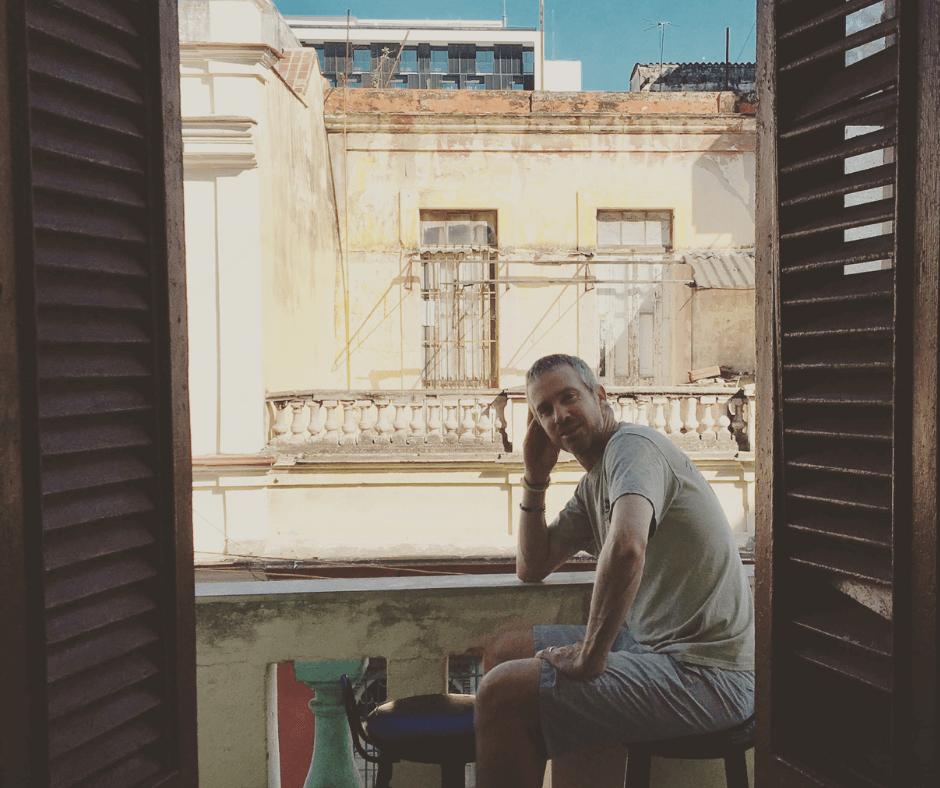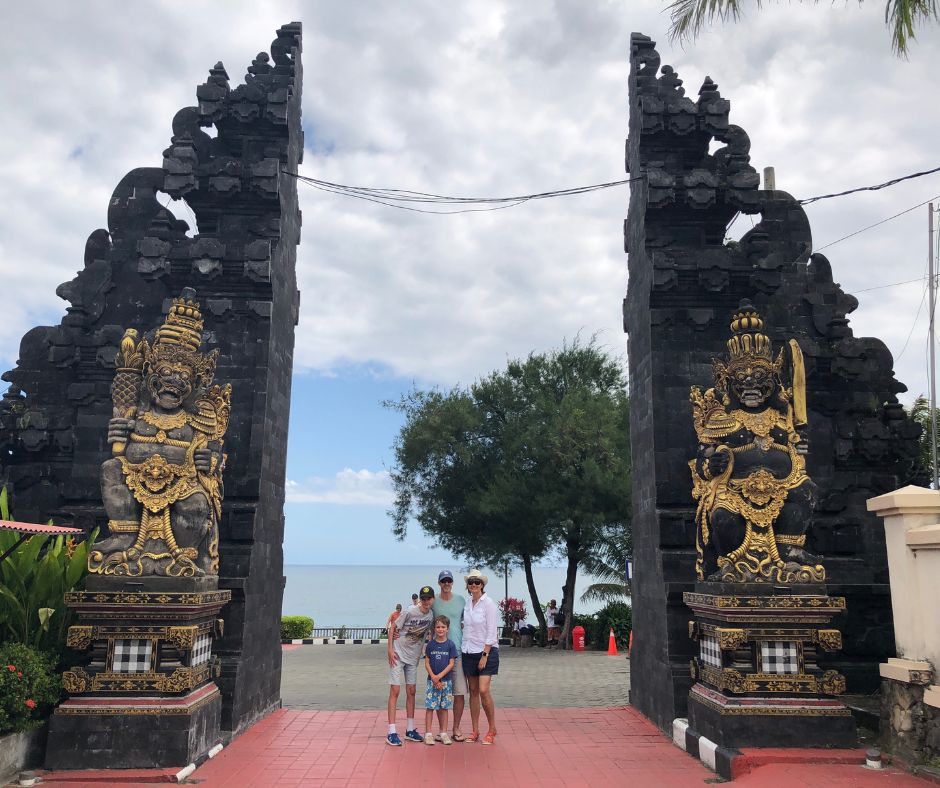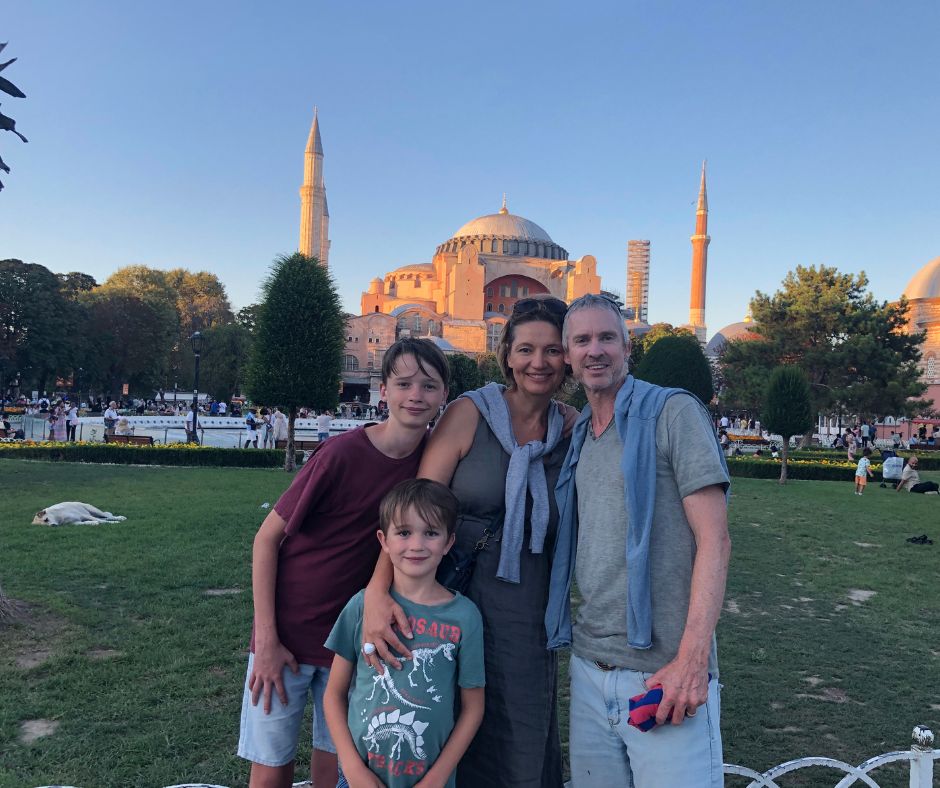A Family Adventure at Jatiluwih Rice Terraces: Tips and What to Expect
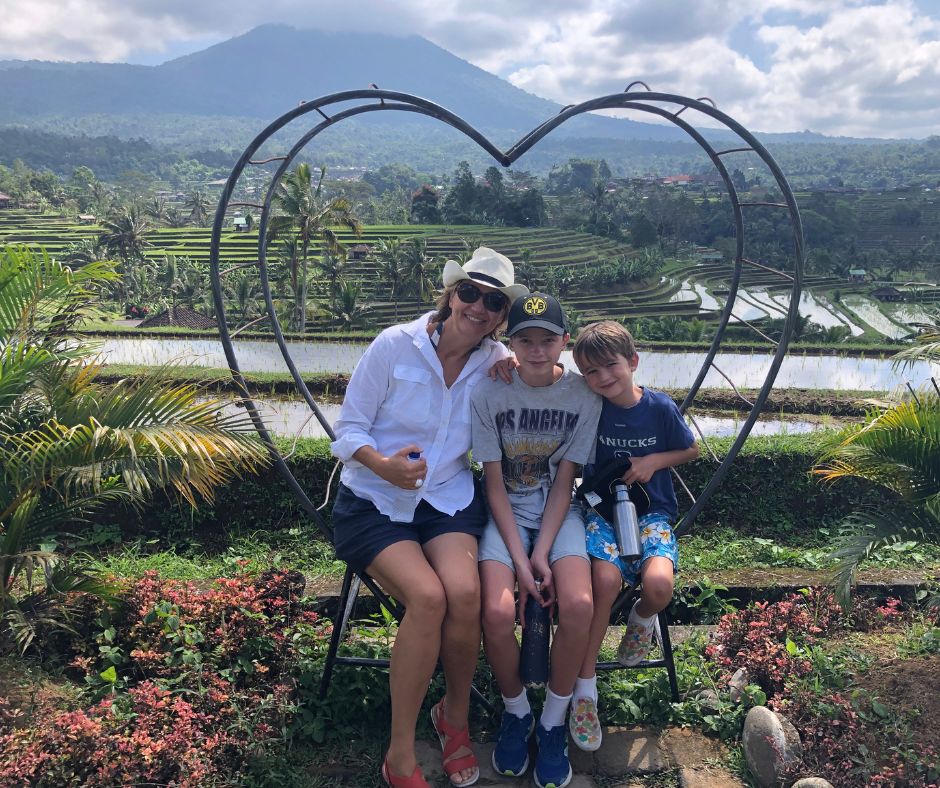
In the heart of Bali’s lush countryside, Jatiluwih Rice Terraces offer a breathtaking escape from the bustling beaches of Seminyak, Kuta, and Canggu.
These UNESCO World Heritage-listed terraces span over 600 hectares, showcasing the island’s traditional subak irrigation system and providing visitors with unparalleled views of emerald-green paddies.
As you venture into this serene landscape, you’ll find yourself immersed in the authentic Balinese rural life, far removed from the typical tourist haunts.
The terraces not only serve as a testament to the ingenious agricultural practices of the Balinese people but also offer a peaceful retreat for those seeking to connect with nature.
Whether you’re an avid photographer, a culture enthusiast, or simply in search of tranquillity, Jatiluwih Rice Terraces promise an unforgettable experience.
As you explore the winding paths through the paddies, you’ll gain a deeper appreciation for Bali’s rich heritage and the harmonious relationship between humans and nature that has shaped this stunning landscape.
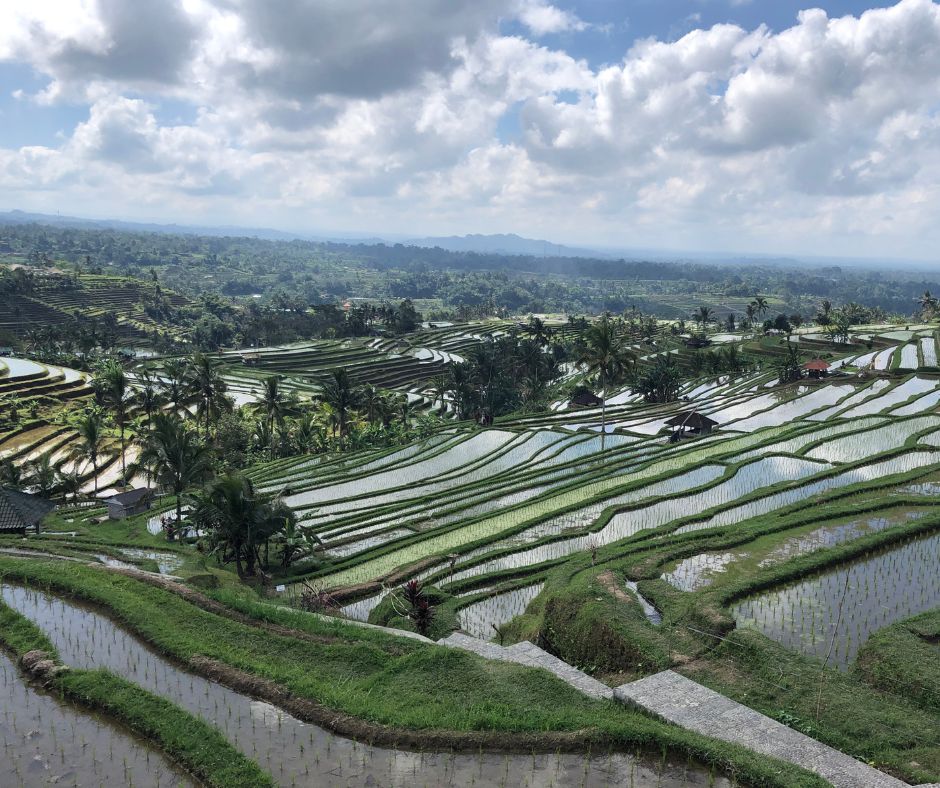
The stunning Jatiluwih Rice Terraces
History and Significance
The Jatiluwih Rice Terraces represent centuries of Balinese agricultural tradition and ingenuity.
These terraces showcase the harmonious relationship between humans and nature through the ancient Subak irrigation system.
Cultural Landscape
The Jatiluwih Rice Terraces date back over 500 years, created by the people of Tabanan regency.
They reflect the unique Subak irrigation system, developed in the 9th century.
This system distributes water from mountain springs through a network of canals and tunnels.
Subak is more than just irrigation.
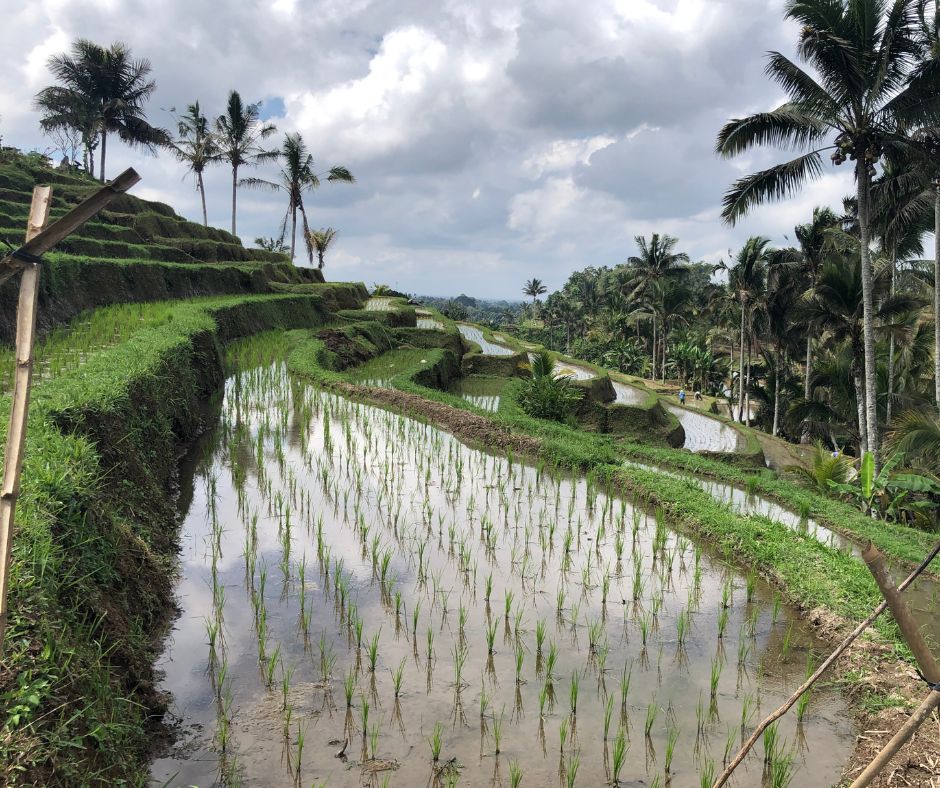
The terraces
It’s a holistic philosophy that balances the realms of spirit, human, and nature.
The terraces embody the Balinese Hindu principle of Tri Hita Karana, which seeks harmony between humans, the environment, and the divine.
The terraces span 600 hectares, forming a stunning patchwork of green across the landscape.
They’re a testament to the Balinese people’s agricultural expertise and their ability to cultivate rice on steep mountain slopes.
UNESCO Heritage Site
In 2012, UNESCO recognised the cultural significance of Jatiluwih by inscribing it as a World Heritage Site.
This designation acknowledges the terraces as an outstanding example of a cultural landscape.
The UNESCO listing includes Jatiluwih as part of the ‘Cultural Landscape of Bali Province’.
This encompasses five rice terraces and their water temples, which represent the Subak system.

Jatiluwih Rice Terraces
This recognition highlights the terraces’ importance in preserving traditional farming methods and ecological balance.
It also showcases Bali’s unique approach to sustainable agriculture and water management.
As a UNESCO site, Jatiluwih plays a crucial role in promoting cultural tourism and raising awareness about traditional farming practices.
It serves as a living museum, demonstrating how ancient wisdom can contribute to modern sustainability challenges.
Geography and Climate
Jatiluwih Rice Terraces are nestled in a stunning mountainous region of Bali, with unique geographical features and a climate that supports lush rice cultivation.
The terraces span across the slopes of Mount Batukaru and are part of Tabanan Regency’s rich agricultural landscape.
Mount Batukaru
Mount Batukaru, Bali’s second-highest volcano, towers over Jatiluwih at 2,276 metres above sea level.
The mountain is part of the Batukaru Mountain Range in North Bali, creating a dramatic backdrop for the rice terraces.
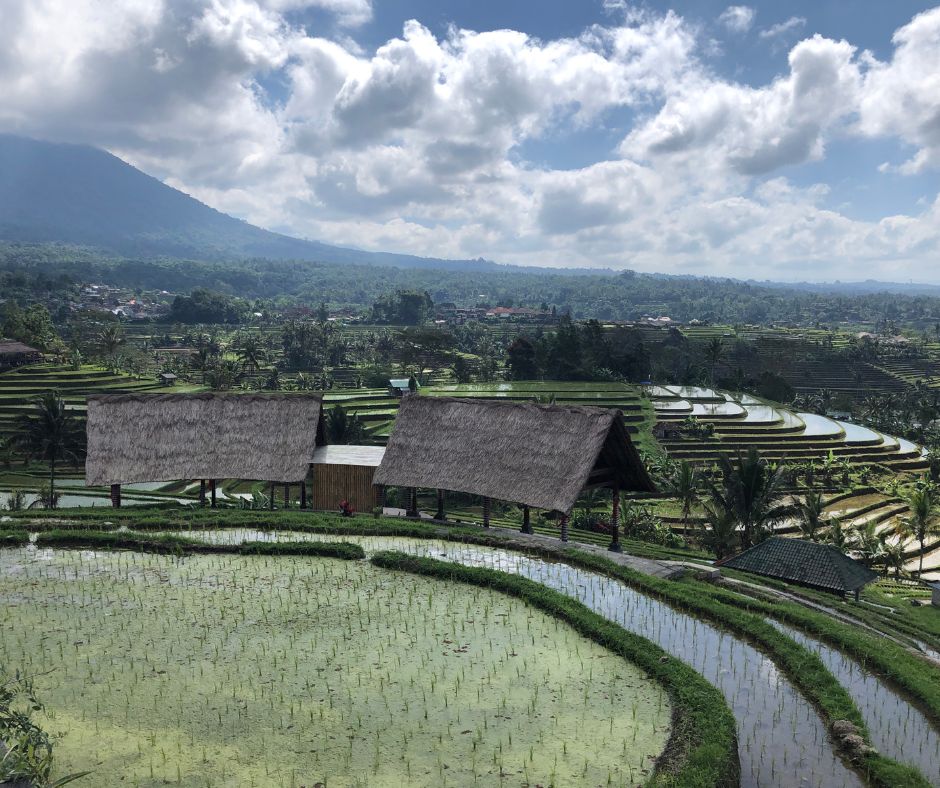
The wonderful views as you walk the different trails
Its volcanic soil enriches the land, making it ideal for rice farming.
The mountain’s presence influences local weather patterns, often shrouding the area in mist and providing ample rainfall.
This consistent moisture supports the intricate subak irrigation system used in the rice terraces.
Tabanan Regency
Jatiluwih is located in Tabanan Regency, known as Bali’s ‘rice bowl’ due to its fertile lands and extensive rice fields.
The regency covers an area of 839.33 square kilometres, with Jatiluwih situated approximately 700 metres above sea level.
The region experiences a tropical climate with two distinct seasons: dry (April to October) and wet (November to March). Average temperatures range from 20°C to 29°C, creating ideal conditions for rice cultivation.
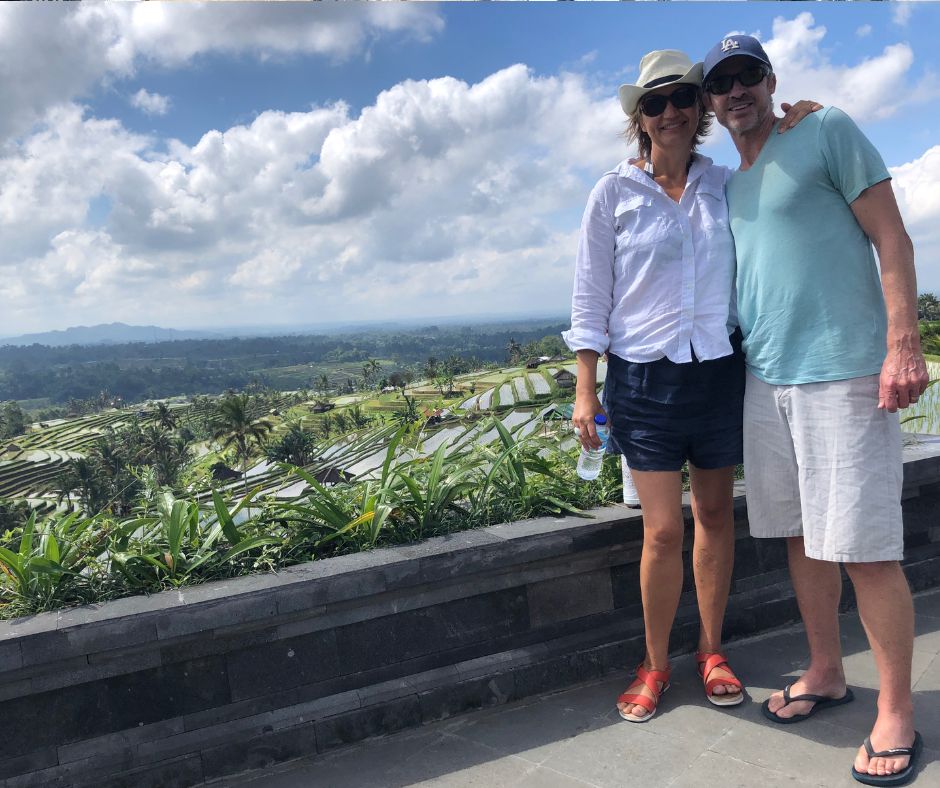
Over looking Jatiluwih Rice Terraces from the top
Tabanan’s unique geography, combining coastal areas with highlands, contributes to its agricultural success.
The regency’s diverse landscape includes not only rice terraces but also coffee plantations and tropical forests, making it a vital part of Bali’s ecosystem and economy.
Attractions and Activities
Jatiluwih Rice Terraces offer a diverse range of experiences for visitors.
You can explore the area through various activities that showcase the natural beauty and cultural significance of this UNESCO World Heritage Site.
Trekking and Hiking
The rice terraces provide excellent opportunities for trekking and hiking.
You can embark on guided tours along well-marked paths that wind through the lush green landscape.
These routes offer stunning viewpoints where you can capture breathtaking photos of the terraced fields.
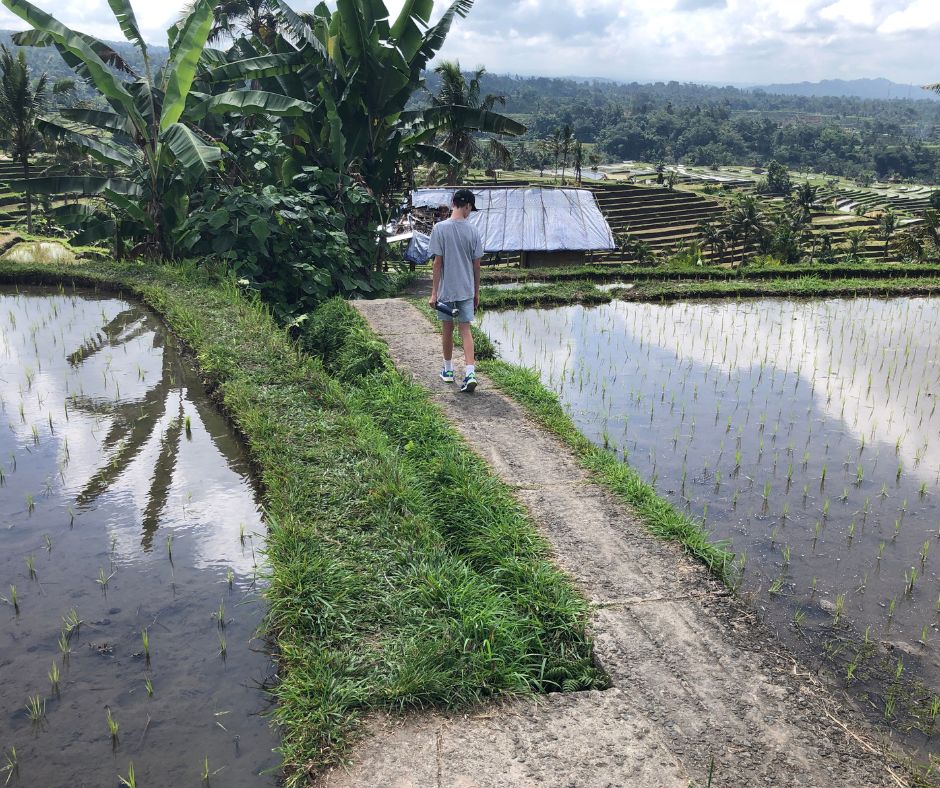
Lukas strolling along one of the trails
The White Route is a popular trail that takes you through the heart of the rice paddies.
It’s a moderate 1.5-hour walk suitable for most fitness levels.
For a more challenging trek, consider hiking to the nearby Yeh Hoo Waterfall.
This hidden gem requires a bit of effort to reach but rewards you with a refreshing natural pool at its base.
Cycling Tours
Cycling is an excellent way to cover more ground and immerse yourself in the serene surroundings.
You can join guided e-bike cycling tours that take you through the terraces and neighbouring villages.
These tours typically last 2-3 hours and include stops at key viewpoints.
You’ll cycle along narrow paths between the rice fields, offering unique perspectives of the landscape.
Many tour operators provide helmets and water. Some even include lunch at a local warung (small family-owned restaurant) as part of the experience.
Jatiluwih Green Land
Jatiluwih Green Land serves as the main entrance and information centre for the rice terraces. Here, you’ll find:
- A visitor centre with displays about the Subak irrigation system
- Local guides available for hire
- Restaurants offering traditional Balinese cuisine
- Souvenir shops selling locally made crafts
The area provides excellent photo opportunities, with several elevated platforms offering panoramic views of the terraces.
Local Temples
Several ancient temples dot the landscape around Jatiluwih, adding cultural depth to your visit. Two notable temples include:
- Luhur Bhujangga Waisnawa Temple: Located within the rice terrace complex, this temple is dedicated to the god of agriculture.
- Pura Luhur Petali Temple: Situated on a nearby hill, this temple offers stunning views of the surrounding rice fields and mountains.
While visiting these temples, remember to dress respectfully and wear a sarong, which can often be rented on-site.
Ecology Agriculture
The Jatiluwih Rice Terraces showcase a harmonious blend of ecological principles and agricultural practices.
This unique landscape exemplifies sustainable farming techniques that have been perfected over centuries.
Irrigation System
The subak irrigation system is the lifeblood of Jatiluwih’s rice terraces.
This ingenious water management method ensures equitable distribution of water to all rice fields.
Canals and bamboo pipes channel water from nearby rivers and springs across the terraced landscape.
The system operates on principles of cooperation and shared responsibility amongst farmers.
Regular meetings are held to coordinate water usage and resolve any issues.
This communal approach reflects the Balinese philosophy of Tri Hita Karana, which emphasises harmony between humans, nature, and the divine.
Subak not only regulates water flow but also helps control pests naturally.
The synchronized flooding and draining of fields disrupts pest life cycles, reducing the need for chemical pesticides.
Rice Cultivation
Rice cultivation in Jatiluwih follows time-honoured traditions that work in sync with natural cycles.
Local farmers primarily grow a native Balinese rice variety called Beras Merah Jatiluwih, known for its distinct red colour and nutty flavour.
The cultivation process begins with seed selection and nursery preparation.
Seedlings are then transplanted to the main fields, where they are nurtured using organic methods.
Farmers use traditional tools like wooden ploughs and hand-held implements for various tasks.
Crop rotation and fallow periods are integral to maintaining soil fertility.
After the rice harvest, farmers often plant secondary crops like vegetables or legumes to replenish soil nutrients.
The terraced layout of the rice paddies serves multiple purposes.
It prevents soil erosion, conserves water, and creates a diverse ecosystem that supports various plant and animal species.

The stunning Jatiluwih Rice Terraces
Travel Tips
Planning your visit to Jatiluwih Rice Terraces requires careful consideration.
From timing to transportation, these tips will help you make the most of your experience.
Best Time to Visit
The best time to visit Jatiluwih Rice Terraces is between February and April.
During these months, the rice fields are lush and green, offering stunning views.
Early mornings provide the most serene atmosphere and ideal lighting for photographs.
Avoid visiting during the rainy season from October to March, as heavy rains can make the terraces muddy and difficult to navigate.
The dry season from April to September offers clearer skies but less vibrant greenery.
Weekdays are generally less crowded than weekends.
Arrive early, around 8 am, to beat the tour groups and enjoy a peaceful exploration.

Jatiluwih Rice Terraces map of the different trails and times
Jatiluwih Entrance Fee
As of 2025, the Jatiluwih entrance fee is 40,000 IDR (Indonesian Rupiah) for adults and 20,000 IDR for children.
This fee contributes to the maintenance of the UNESCO World Heritage Site.
Keep small denominations of Indonesian currency on hand, as credit cards may not be accepted at the entrance.
The ticket office opens at 8 am and closes at 6 pm daily.
Your entrance fee includes access to the main viewing areas and walking paths.
Some additional activities, such as guided tours or bike rentals, may incur extra charges.
Benefits of Taking a Tour Around Jatiluwih Rice Terraces
Booking a tour can enhance your Jatiluwih experience.
Knowledgeable guides provide insights into the ancient Subak irrigation system and local culture.
They can also help you navigate the vast 600-hectare area efficiently.
Tours often include transportation, which eliminates the need to hire a private driver or navigate unfamiliar roads.
Many tours combine Jatiluwih with other nearby attractions, maximising your sightseeing time.
Group tours offer a cost-effective option, while private tours provide flexibility in itinerary and pace.
Some tours include activities like cycling through the terraces or traditional Balinese cooking classes.
Wear Comfortable Shoes and Bring Block
Comfortable, closed-toe shoes are essential for exploring Jatiluwih.
The terrain can be uneven and muddy, especially after rain.
Trainers or hiking shoes with good grip are ideal.
Bring a hat, sunglasses, and high-SPF sunblock to protect yourself from the tropical sun.
The terraces offer little shade, and you’ll likely spend several hours outdoors.
Pack insect repellent to ward off mosquitoes, particularly if you’re visiting during the wetter months.
A light, long-sleeved shirt can provide additional protection from both sun and insects.
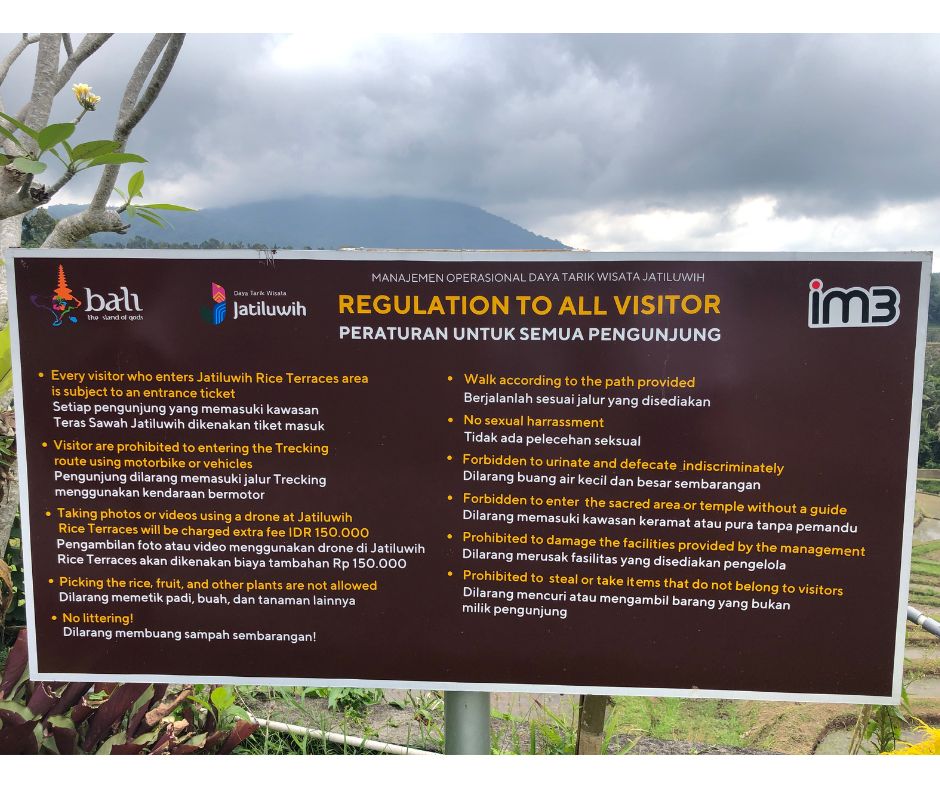
Jatiluwih Rice Terraces information
Getting There
Jatiluwih Rice Terraces are located in central Bali, about 50 km north of Denpasar.
The journey takes approximately 2 hours by car from popular tourist areas like Ubud or Canggu.
Hiring a private driver is the most convenient option.
Expect to pay around 600,000-800,000 IDR for a full day’s hire, including Jatiluwih and other nearby attractions.
If you’re comfortable driving in Bali, renting a scooter offers flexibility.
However, be prepared for winding mountain roads and variable weather conditions.
Public transportation to Jatiluwih is limited.
Some local buses run from Denpasar to Tabanan, but you’ll need to arrange additional transport from there to the rice terraces.
Best Jatiluwih Tours
Several reputable companies offer tours to Jatiluwih Rice Terraces.
Look for tours that include an English-speaking guide, comfortable transportation, and sufficient time at the site (at least 2-3 hours).
Popular options include combination tours that visit Jatiluwih along with nearby temples like Tanah Lot or Ulun Danu Beratan.
These typically last 8-10 hours and cost around 800,000-1,200,000 IDR per person.
For a more immersive experience, consider a cycling tour through the terraces.
These tours often include bike rental, a guide, and lunch at a local warung (small family-owned restaurant).
Private tours offer the most flexibility. While pricier, they allow you to customise your itinerary and spend as much time as you like at Jatiluwih.
Accommodation
Finding a place to stay near Jatiluwih Rice Terraces is straightforward.
You’ll have various options to suit different budgets and preferences.
Hotels are plentiful in the area. Many offer comfortable rooms with modern amenities and stunning views of the terraces.
Prices range from affordable to luxurious, giving you flexibility in your choice.
For a more authentic experience, consider staying in a homestay.
These family-run accommodations allow you to immerse yourself in local culture and often provide home-cooked meals.
Some popular booking platforms for finding accommodation near Jatiluwih Rice Terraces include:
These sites offer a wide selection of hotels and often feature guest reviews to help you make an informed decision.
When booking, look for properties that offer:
- Free cancellation: This gives you flexibility if your plans change
- Great savings: Many sites offer discounts and deals
- Prime location: Choose accommodation close to the terraces for easy access
Remember to book in advance, especially during peak tourist seasons.
This ensures you get the best rates and availability for your preferred dates.
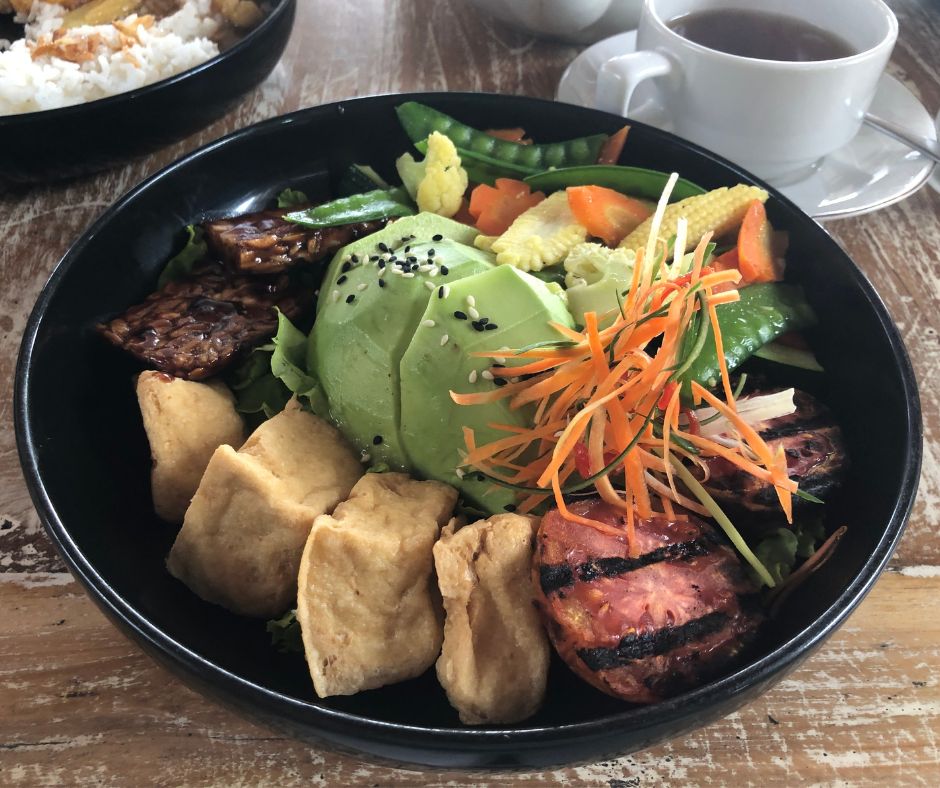
One of the dishes at Jatiluwih Resto
Places to Eat
Jatiluwih offers stunning views of rice terraces alongside delicious local cuisine.
You’ll find a range of dining options to satisfy your appetite after exploring the area.
Jatiluwih Resto
Jatiluwih Resto stands out as a top choice for dining in the area.
You’ll be treated to breathtaking views of the rice terraces whilst enjoying your meal.
The restaurant features cosy corners and traditional Balinese décor, making it a perfect spot for photos.
The menu showcases local Balinese dishes. You must try their Nasi Campur Bali, a mixed rice dish served with various side items like fried tofu, boiled eggs, and assorted meats (excluding beef).
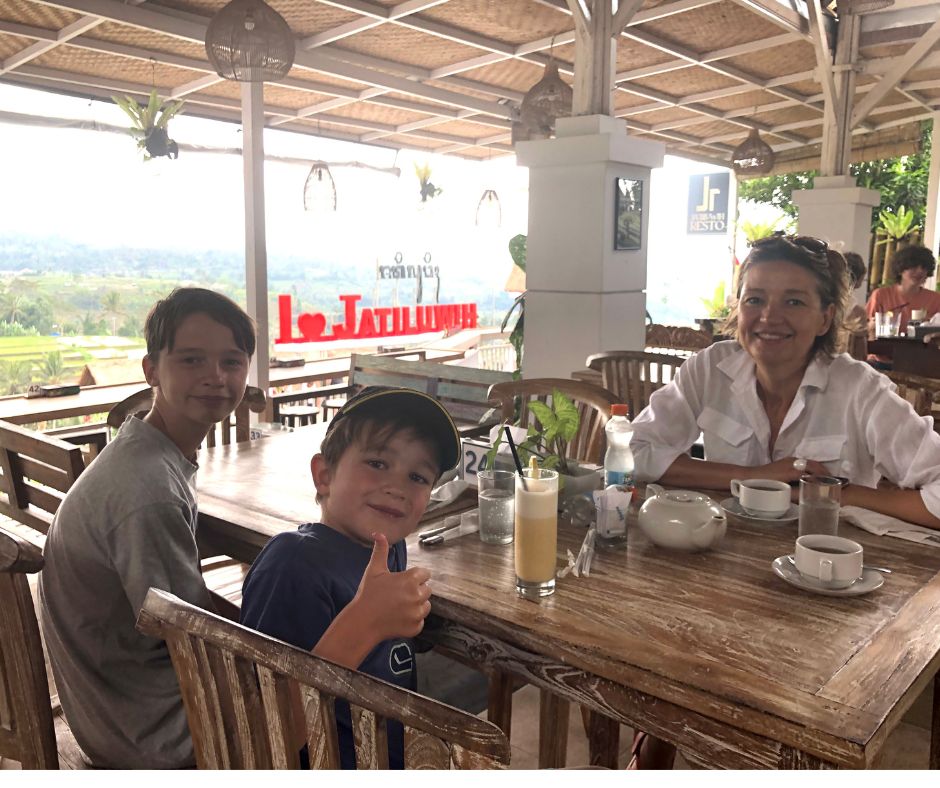
The Jatiluwih Resto that overlooks Jatiluwih Rice Terraces
This gives you a taste of authentic Balinese flavours in one meal.
For the best experience, book a table near the windows or on the terrace.
This ensures you’ll have unobstructed views of the lush green landscape whilst dining.
The restaurant can get busy during peak hours, so arriving early is advisable.
Frequently Asked Questions
Visitors often have queries about the Jatiluwih Rice Terraces, from practical matters to cultural significance.
Here are answers to some common questions to help you plan your visit.
What are the key differences between Jatiluwih and Tegalalang rice terraces?
Jatiluwih covers a larger area, spanning over 600 hectares compared to Tegalalang’s smaller size.
Jatiluwih offers a more peaceful atmosphere with fewer crowds, whilst Tegalalang is more popular and can be busier.
Jatiluwih’s terraces follow natural contours, creating a more organic landscape.
Tegalalang, though beautiful, has a more manicured appearance.
How can one obtain tickets to visit the Jatiluwih rice terraces?
You can purchase tickets directly at the entrance to the Jatiluwih Rice Terraces.
There’s no need to book in advance, simply pay the entrance fee upon arrival.
The fee is modest and contributes to the preservation of the site.
Remember to keep your ticket with you during your visit.
What is the optimal way to travel from Ubud to the Jatiluwih rice terraces?
The journey from Ubud to Jatiluwih takes about 1.5 to 2 hours by car.
Hiring a private driver is often the most convenient option, allowing you to enjoy the scenic route.
Alternatively, you can join a guided tour from Ubud, which typically includes transportation and additional insights about the area.
What are the operating hours of the swing at the Jatiluwih rice terraces?
The swing at Jatiluwih Rice Terraces typically operates during daylight hours, aligning with the site’s general opening times.
However, it’s best to arrive earlier in the day for the best experience.
Remember that swings are weather-dependent, so operation may be suspended during unfavourable conditions for safety reasons.
Are visitor reviews available for the Jatiluwih rice terraces, and what do they suggest?
Yes, numerous visitor reviews are available online. Most reviews praise the breathtaking views and peaceful atmosphere of Jatiluwih Rice Terraces.
Visitors often recommend wearing comfortable shoes for walking and bringing a camera to capture the stunning landscapes.
Many also suggest visiting early in the morning for the best light and fewer crowds.
What is the significance of the Jatiluwih rice terraces being a UNESCO World Heritage site?
UNESCO recognised Jatiluwih Rice Terraces as part of Bali’s Cultural Landscape in 2012.
This designation acknowledges the area’s outstanding natural beauty and cultural importance.
The terraces exemplify the traditional Balinese subak system, an ancient water management method that reflects the Balinese philosophy of harmony between humans, nature, and the spiritual realm.
Final Thoughts
Our day at Jatiluwih Rice Terraces was nothing short of magical.
Surrounded by lush greenery and stunning panoramic views, we found it easy to lose ourselves in the tranquility of Bali’s countryside.
Walking through the UNESCO World Heritage site gave us a glimpse into the island’s rich agricultural history and local culture.
The well-maintained paths made it a peaceful and accessible experience, allowing us to explore at our own pace.
Stopping for lunch at a nearby Jatiluwih Resto with sweeping views of the terraces was a highlight, giving us a chance to soak in the scenery while enjoying some delicious Balinese dishes.
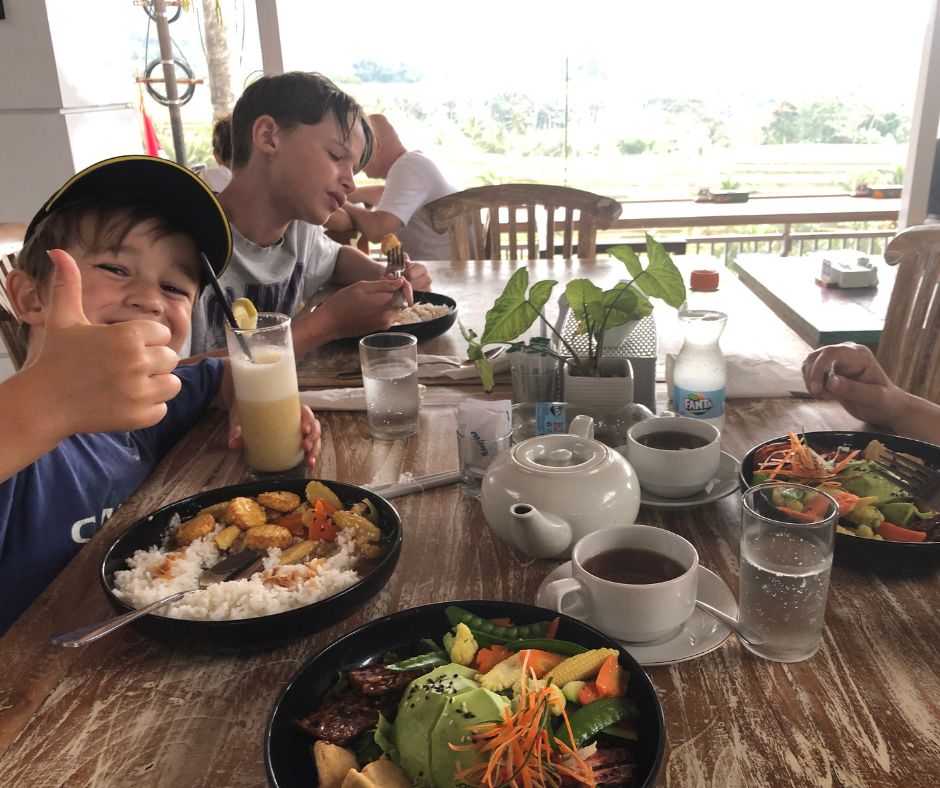
Jatiluwih Resto, the food here was amazing
The fresh air, beautiful landscapes, and calm atmosphere made it the perfect escape from the busier tourist spots.
Jatiluwih Rice Terraces was more than just a day out, it was a chance to connect with nature and create special family memories.
We’ll definitely return, next time bringing a picnic to stay even longer and fully embrace the serene surroundings.
If you’re visiting Bali, this is a must-see destination that shouldn’t be missed!
Disclosure: This post might contain affiliate links. This means I might receive a small commission if you click and purchase something. Clicking on these links will not cost you anything, however it helps me to keep my website running. For more information click on our disclosure policy.
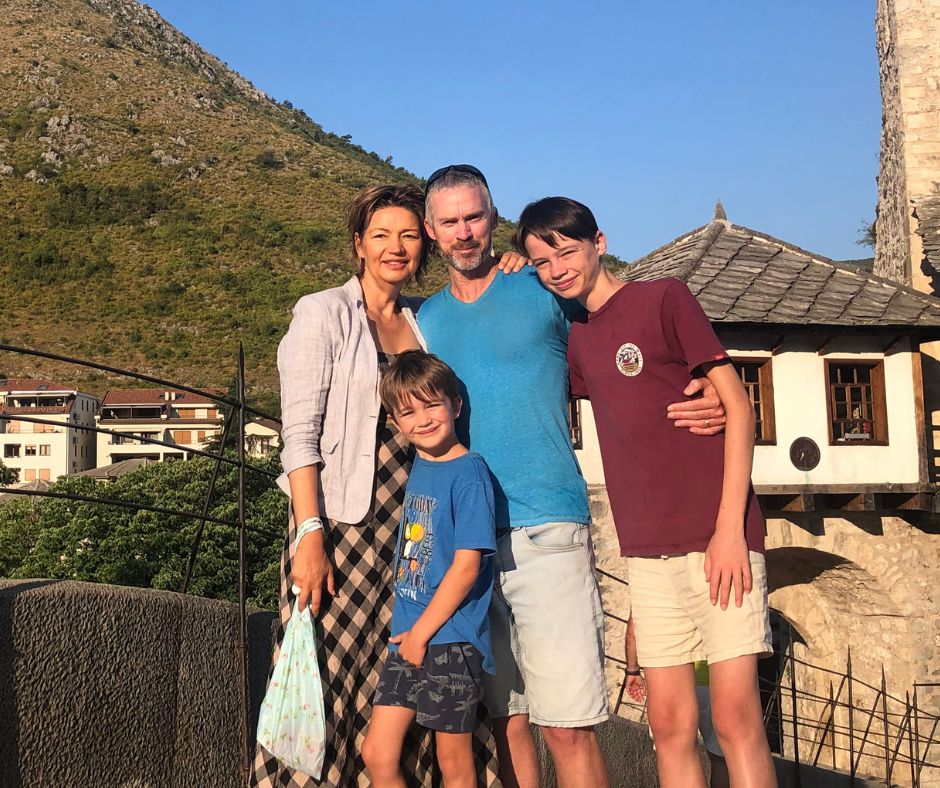
Meet the family
We are a family of 4 living in New Zealand. I’m a teacher (great profession for traveling) and my wife Connie works in project management. We are also proud parents of two travel-loving boys.
Search
________________________________
Follow Us
________________________________
Subscribe to our Newsletter
________________________________
Recent Posts
________________________________
Scott - 4 Degrees of Destination
_______________________________
Hi, I've been fortunate enough to have travelled for over 25 years. My parents gave me the travel bug when I was 10 years old by taking my sister and I to the USA and Mexico for two months. I've travelled by myself, with mates, with my wife and now as a family of four. My goal is to inspire our families to get out and see the world.

